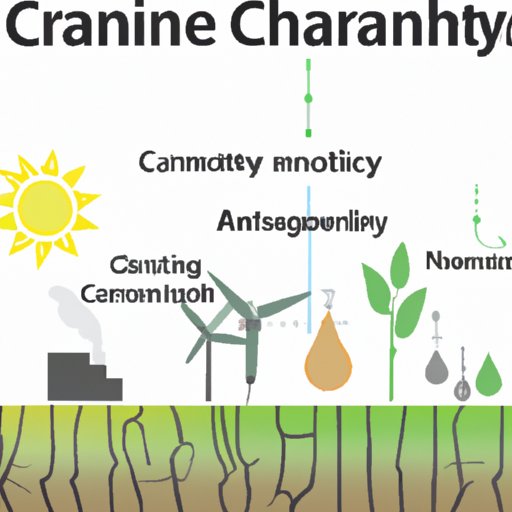Introduction
Climate change is one of the most pressing issues facing our planet today. The effects of global warming are becoming increasingly evident, from melting glaciers to extreme weather events. In order to tackle this urgent challenge, it’s essential that we make use of all available resources. Fortunately, there are a number of ways in which technology can help us address climate change.
Body
1. Promoting Energy Efficiency and Renewable Energy Development
One of the most important steps we can take to combat climate change is to reduce our reliance on fossil fuels and transition to clean, renewable energy sources. Renewable energy sources such as solar, wind and geothermal have huge potential to reduce emissions and provide clean, sustainable energy. In order to make the switch to renewable energy, we need to invest in energy efficient technologies and infrastructure. This includes developing more efficient lighting systems, making buildings more airtight, and utilizing green building materials. Governments and businesses can also incentivize individuals and businesses to adopt more efficient practices, such as offering tax credits or subsidies for energy-efficient investments.
2. Utilizing Smart Technology to Monitor Environmental Changes
In order to effectively combat climate change, we need to be able to accurately monitor environmental changes and collect data to inform decision-making. Smart technology, such as sensors and other monitoring equipment, can be used to detect changes in the environment. This data can then be used to create better strategies for addressing climate change. For example, the data collected by sensors can be used to track levels of air pollution and inform policy decisions, such as setting stricter emissions standards.
3. Developing Sustainable Transportation Solutions
Transportation is a major source of greenhouse gas emissions, so it’s essential that we develop sustainable transportation solutions that reduce emissions. Innovative technologies such as electric vehicles and hybrid cars are being developed to provide greener transportation options. Autonomous vehicles also have the potential to reduce traffic congestion and emissions, as they can be programmed to optimize routes and avoid traffic jams. Additionally, public transportation systems can be improved through the use of smart technology, such as real-time tracking of buses and trains.
4. Improving Waste Management Systems
Waste management is another area where technology can play an important role in combating climate change. Implementing effective waste management strategies is essential for reducing emissions and improving the health of our planet. Technology can be used to improve recycling processes and reduce landfill waste. For example, advanced sorting machines can be used to separate recyclable materials from non-recyclable items, and sensors can be used to monitor waste levels in landfills.
5. Facilitating Carbon Sequestration
Carbon sequestration is a process that can be used to reduce emissions by capturing carbon dioxide from the atmosphere and storing it underground. This process has the potential to significantly reduce emissions and mitigate the effects of climate change. To facilitate carbon sequestration, governments and businesses must invest in research and development of carbon capture and storage technology. Additionally, strategies must be developed for implementing these technologies on a large scale.
6. Encouraging Sustainable Agriculture Practices
Sustainable agriculture is essential for reducing emissions and mitigating the effects of climate change. Technology can be used to promote sustainable farming practices, such as precision agriculture, which utilizes sensors and other monitoring equipment to optimize crop yields and reduce emissions. Additionally, drones and other automated systems can be used to monitor soil quality and water levels, helping farmers to conserve resources and reduce their environmental impact.
7. Enhancing Climate Modeling and Predictive Analytics
Climate modeling and predictive analytics can be used to better understand and prepare for climate change. Advanced analytics and machine learning algorithms can be used to model climate change and make predictions about its future impacts. This data can then be used to inform decision-making and develop strategies for addressing climate change. Additionally, climate modeling and predictive analytics can be used to identify areas that are particularly vulnerable to climate change, allowing us to take proactive steps to protect those regions.
Conclusion
Technology can play an important role in helping us combat climate change. From promoting energy efficiency and renewable energy development to utilizing smart technology to monitor environmental changes, technology can be used to reduce emissions and create a more sustainable world. Additionally, technology can be used to facilitate carbon sequestration, encourage sustainable agriculture practices, and enhance climate modeling and predictive analytics. By utilizing technology to its fullest potential, we can make strides towards combatting climate change and protecting our planet.
(Note: Is this article not meeting your expectations? Do you have knowledge or insights to share? Unlock new opportunities and expand your reach by joining our authors team. Click Registration to join us and share your expertise with our readers.)
